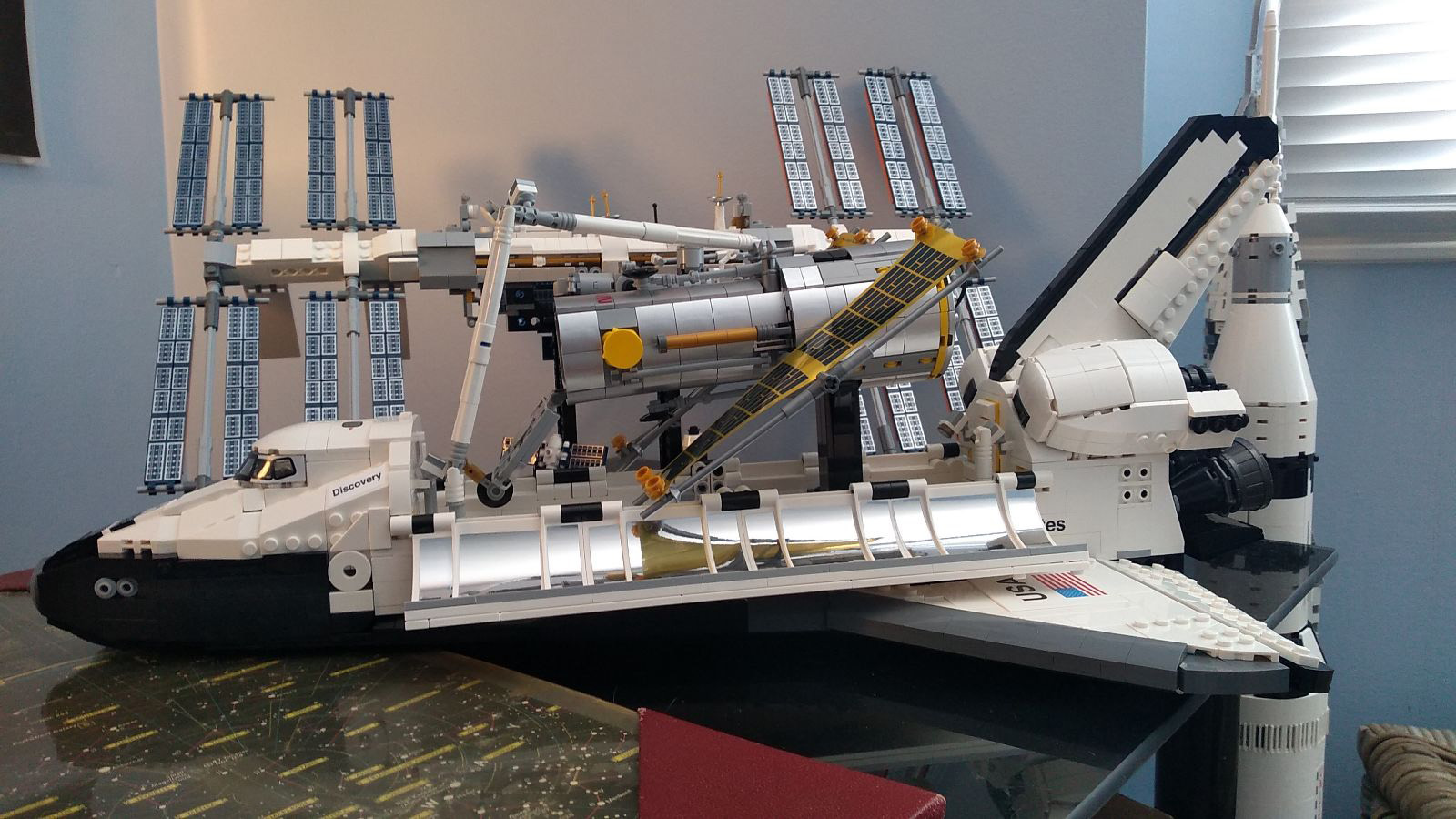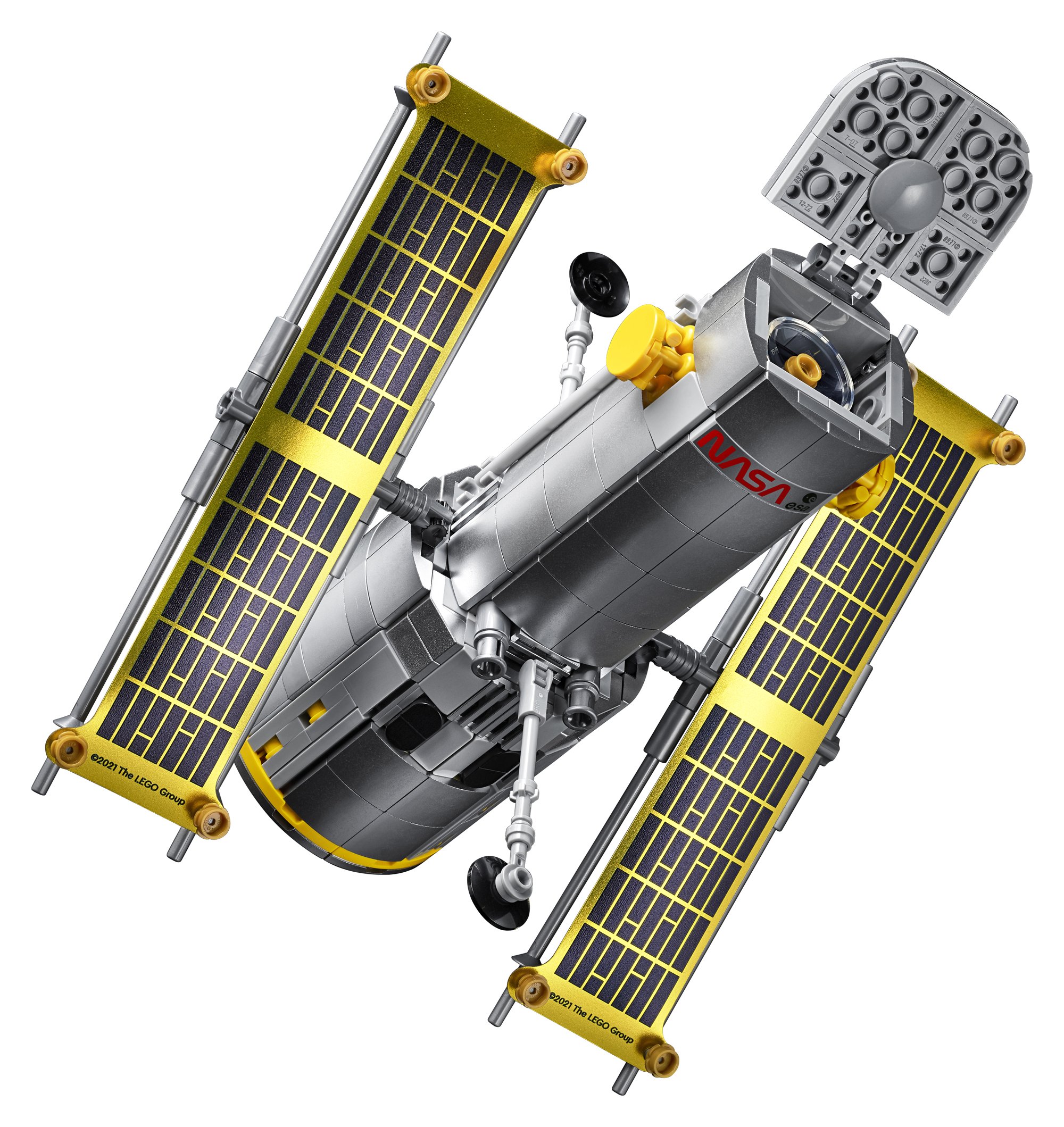Lego's NASA Space Shuttle Discovery set with Hubble is a space geek's dream (review)

I'm a millennial who wasn't even born when the space shuttle first flew, but as a kid of the early 1980s I was lucky enough to follow many of its missions until NASA retired the fleet in 2011.
Naturally, as a Canadian far from the launching pad in Florida, I first watched it fly on television. But I dreamed of seeing one launch (literally, as I recall having a fun dream involving running nearby in a golf cart); I finally got the chance to see three launches in 2009 to 2010 (including Discovery), after graduating from university and securing a part-time job during the last recession that allowed me to travel, albeit counting pennies as I did so. I was lucky because the program retired a decade ago, on July 21, 2011.
Lego NASA Space Shuttle Discovery. $199 at Lego.com.
Build your own Hubble Space Telescope launch with Lego's 2,354-piece NASA Space Shuttle Discovery set.
So you can imagine my nostalgia when I took a look at Lego's latest set depicting space shuttle Discovery and the Hubble Space Telescope mission, STS-31, that launched on April 24, 1990 – almost exactly 31 years ago. I don't remember that mission, but I do remember many of the astronaut upgrade excursions to the telescope in the decades since; the first mission mainly addressed a flawed mirror that accidentally launched on Hubble and blurred its view, while others replaced and upgraded components.
The shuttle and Hubble were defining pieces of space technology for my generation. The shuttle deployed several satellites and helped to build the International Space Station, while Hubble has charted cosmic expansion and showed us cool scenes ranging from comet pieces slamming into Jupiter to a huge image of the galaxy Andromeda (M31) in high-definition.
Related: The best space Lego sets and deals
An epic build
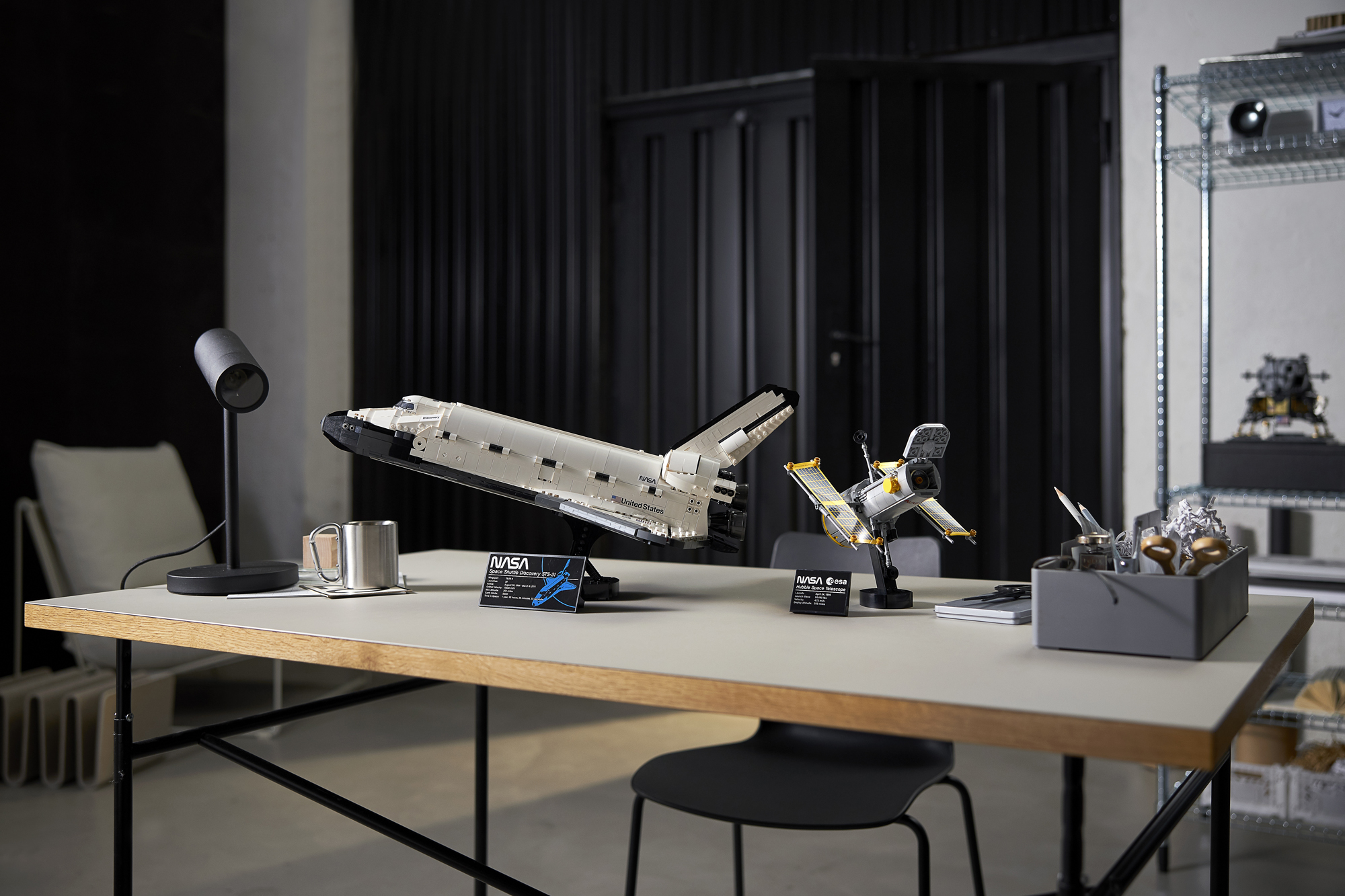
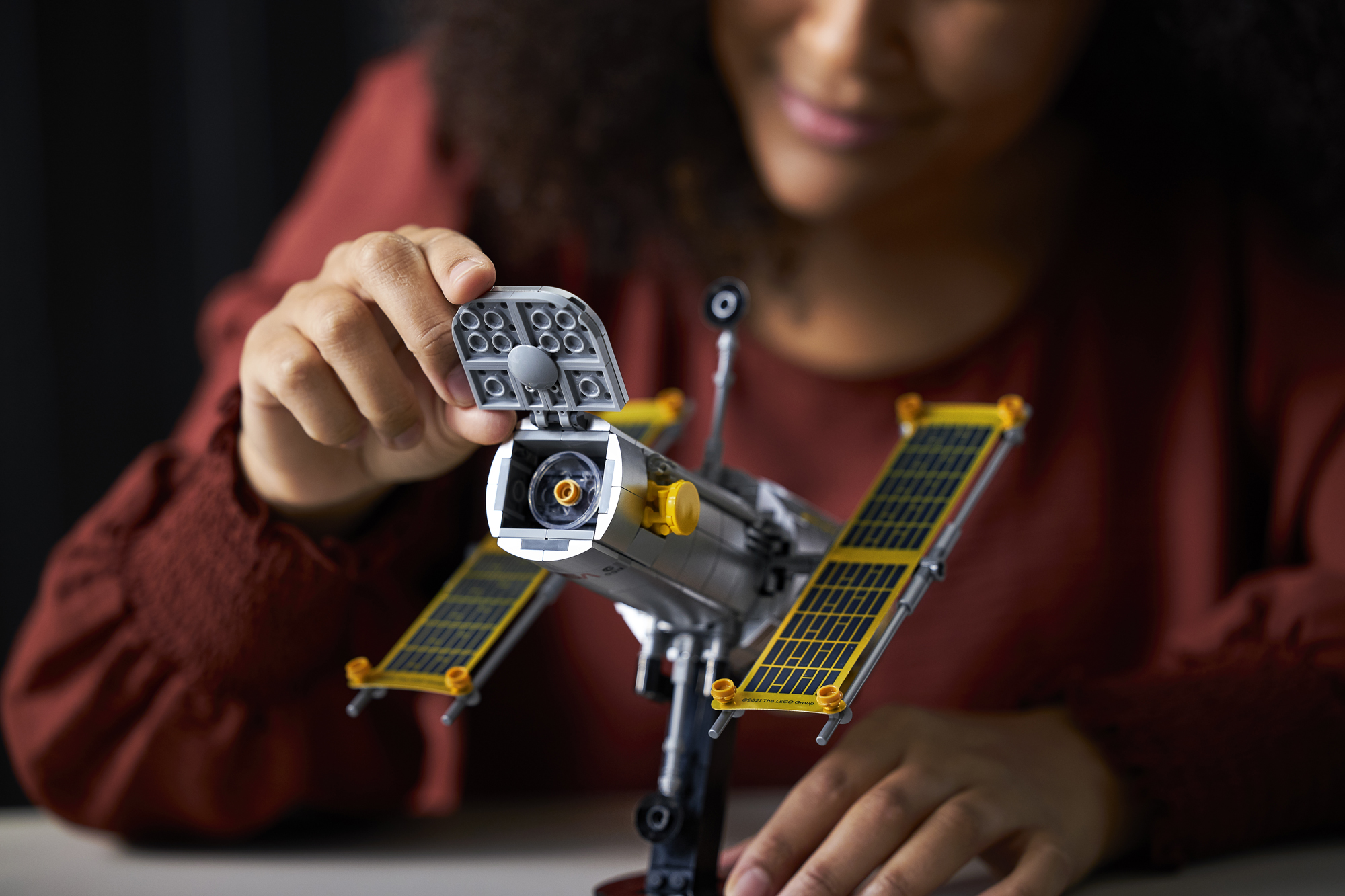

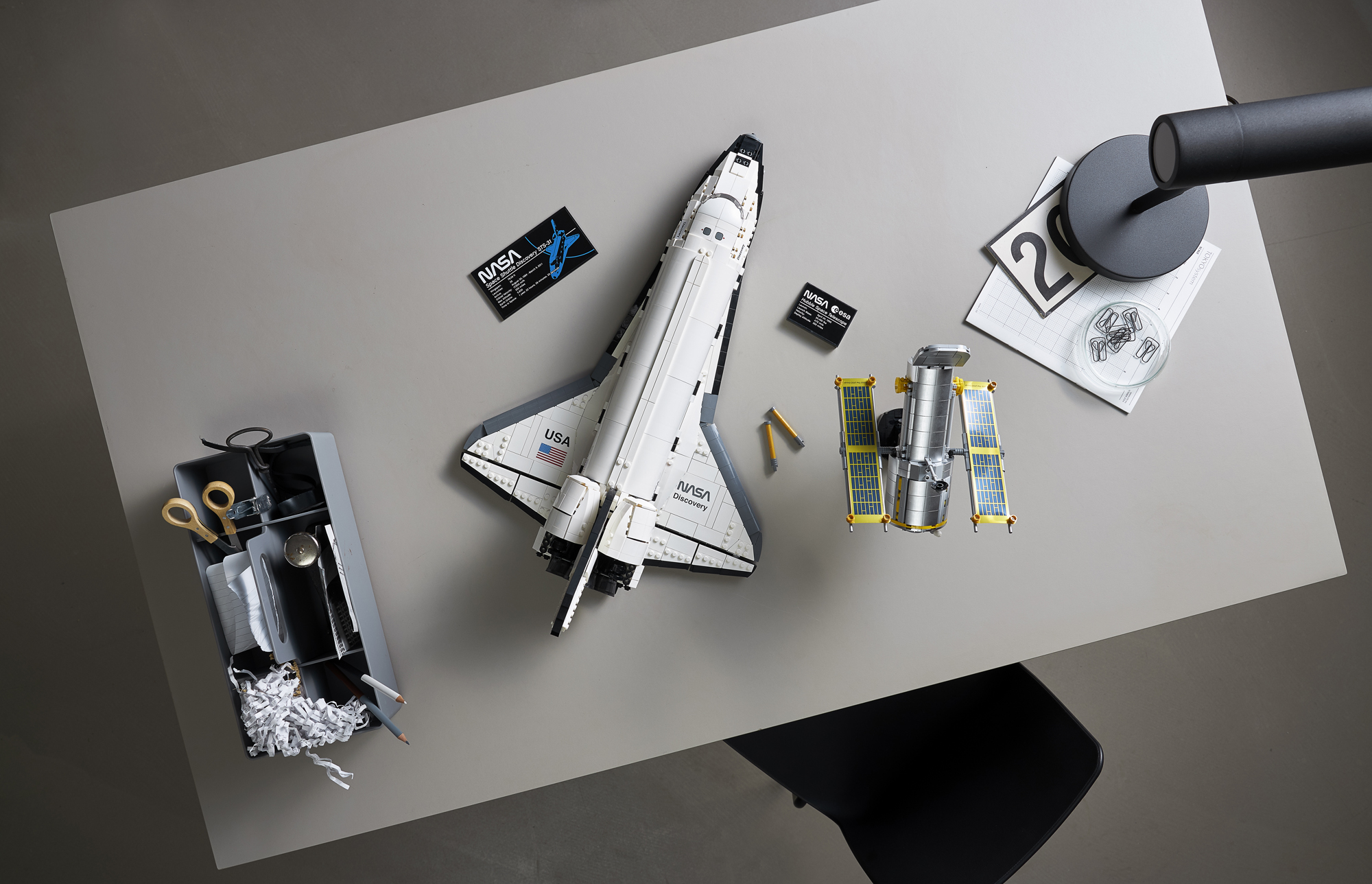


The NASA Space Shuttle Discovery set (MSRP $199.99 USD) releases Thursday (April 1) with 2,354 pieces to put together. It's far from Lego's first shuttle set, and long-time Lego fans probably know that the company released a Hubble-shuttle set for children some years ago.
This set is tailored firmly for the adult, display-only crowd. My build with "frustration-free packaging" (meaning the pieces and stickers were organized in 17 numbered bags and a couple of unlabeled ones) took me nearly 11 hours to complete.
Breaking space news, the latest updates on rocket launches, skywatching events and more!
I was moving fairly quickly as I have experience putting together other recent large space sets such as the International Space Station (864 pieces), the Apollo 11 Eagle lander (1,087 pieces) and the Apollo 11 Saturn V rocket (1,969 pieces in honor of its launching year, 1969.) But your mileage may vary. Incredibly adept Lego builders will probably clock well under 10 hours, while first-timers can expect to spend a lot more time. But really, what's the rush? It's a set well worth admiring as you go.
Related: Lego reveals space shuttle Discovery set featuring Hubble Telescope
In NASA style, I recorded some "lessons learned" from constructing this set. The first one is to have a very large surface. My available desk space was roughly 3 feet by 2 feet (1 meter by 0.6 meters); I'd recommend a little larger as organizing the pieces, manual and ever-growing shuttle got tougher as the hours continued. I made it in the end, but it was a tight squeeze as the final set is 8.5 inches (21 centimeters) high, 21 inches (54 cm) long and 13.5 inches (34 cm) wide.
Next, pace yourself, as parts of the set require a lot of delicacy to put together and you'll want to be at high energy when those sections come up. One example is the numerous reflective stickers that must paste precisely onto sections of the payload bay doors, which happens at the tail end of a huge bag of pieces where you might be tired anyway. You'll also need to be careful that the base of the shuttle stays together while the top-heavy payload bay is under construction; a piece or two fell out from the bottom during my build, but I easily put it back together.
The diagrams that Lego sends in its gorgeous manual — filled with fun facts about shuttles — are mostly self-explanatory, although I struggled in a couple of spots. To admittedly tired eyes, as I built the set over three long days for this story, it looked like Lego was asking me to build two left wheels at one point. Also, the Canadarm robotic arm has a unique piece in the middle that is easy to mistake for other grey joints, so make sure not to repeat my error of using it in an antenna and scratching my head in utter confusion for 15 minutes until I spotted the wrongly used piece.
Related: Lego's International Space Station model is out of this world
These are small quibbles with the otherwise incredible set, however. I got smaller nostalgic flashes when constructing the cockpit, complete with the 1980s-looking computers and the tiny astronaut chairs. The rudder and flaps snapped together easily on the shuttle frame, along with the engines. Lego also was careful to minimize the use of black-and-white pieces in the spots that won't show on the final build. Using yellows, blues, greens and reds made it a lot easier to sail through these sections quickly, because otherwise I would have been hunting for hours for the right piece.
I love how various parts of the shuttle move when you have it put together, although being a klutz, I didn't push the set too far in terms of its flexibility. That said, it appears the wheels fold up into and down from the frame. The rudder and flaps swing back and forth. Best of all, the payload bay doors open and close very smoothly. You can fit your completed Hubble inside this empty space, or stack it inside, or set it aside on a stand; Lego gives you complete freedom to figure out your display preference.
Related: 10 cool facts about space shuttle Discovery
For those who might be introducing themselves to the shuttle, I love how the set embeds a little bit of education into the build. I already mentioned the facts in the manual, but what I also love is just how much the set shows in terms of the shuttle's capabilities. It's obvious from looking at it that it was designed to land somewhat like a plane.
The relative huge size of the payload bay was one of Lego's chief design challenges in making this set work. But it's well worth their effort, as it shows one of the chief functions of shuttle, which was to ferry stuff up and down from space. The shuttle doesn't quite show the real-life capacity of this vehicle, which was typically seven people; however, eight astronauts was possible if you really squeezed them in, STS-61A style. But I can appreciate the relative size of the cockpit made it difficult to fit in all the seating. As a little bonus, I love how you can see some of the seats and computers when you look through the glass windows at the front.
This set will require a lot of money and time on your part to launch successfully, but if you can afford both of these things it is well worth the investment. Shuttle lovers finally have a set that can proudly stand alongside those of the Apollo generation and the ISS, and the little detailed touches make this set a great tribute to remembering Hubble's enduring success.
Follow Elizabeth Howell on Twitter @howellspace. Follow us on Twitter @Spacedotcom and on Facebook.

Elizabeth Howell (she/her), Ph.D., was a staff writer in the spaceflight channel between 2022 and 2024 specializing in Canadian space news. She was contributing writer for Space.com for 10 years from 2012 to 2024. Elizabeth's reporting includes multiple exclusives with the White House, leading world coverage about a lost-and-found space tomato on the International Space Station, witnessing five human spaceflight launches on two continents, flying parabolic, working inside a spacesuit, and participating in a simulated Mars mission. Her latest book, "Why Am I Taller?" (ECW Press, 2022) is co-written with astronaut Dave Williams.

